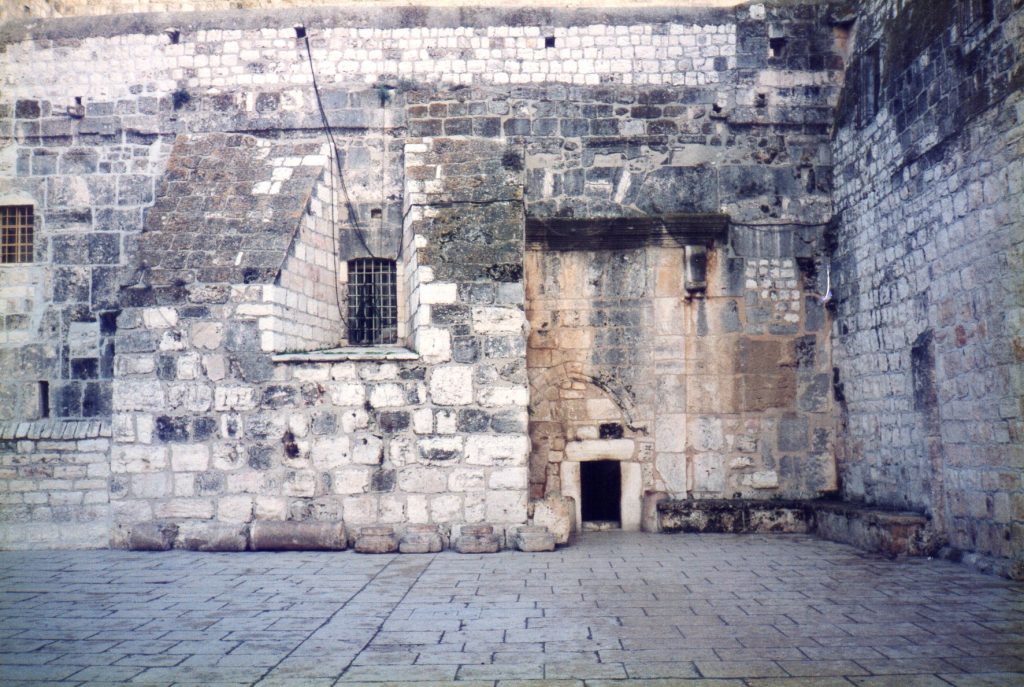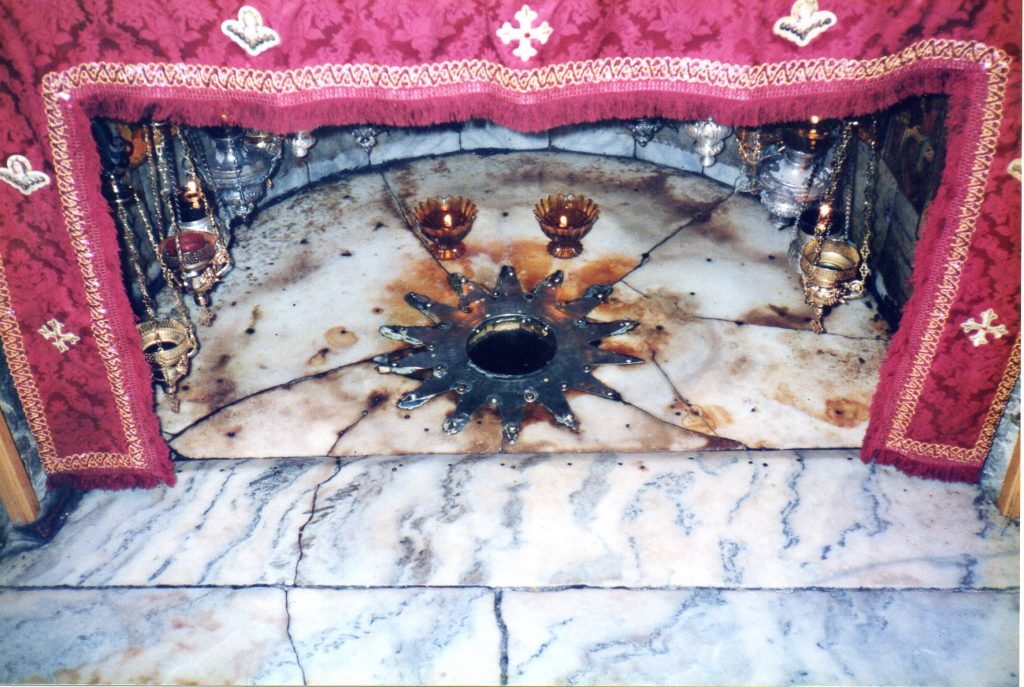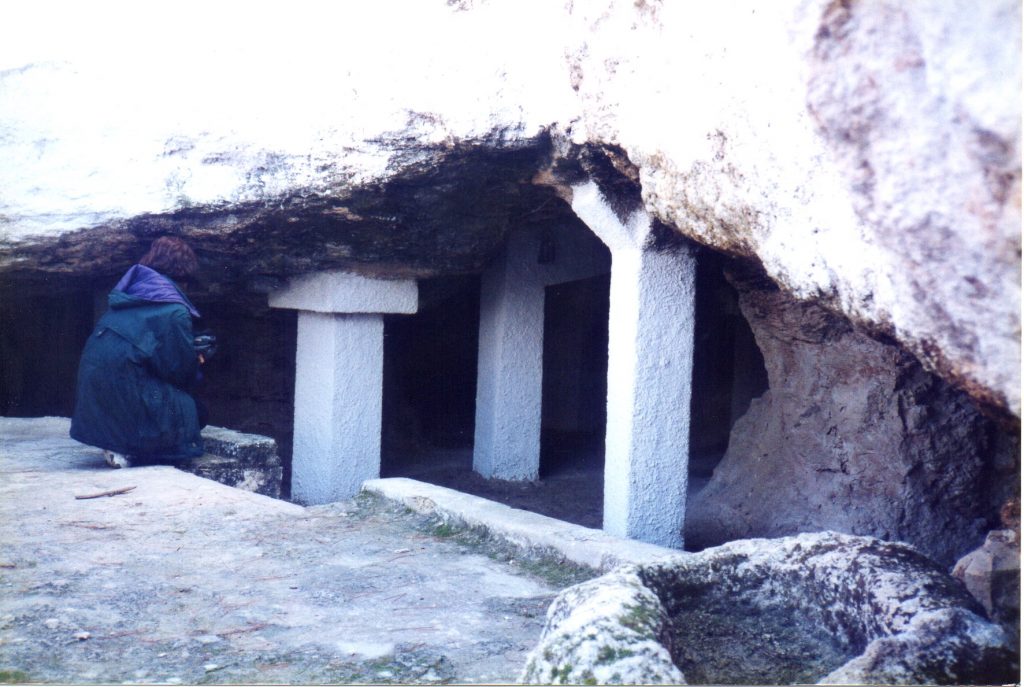Many years ago, I had the opportunity to tour Israel. Twice, in fact. It’s a powerful visual aide to have seen many of the places I’ve read about in my Bible. On both trips, we visited the town of Bethlehem. I want to share some photos I took on those trips.
Of course, the town of Bethlehem is famous as the place with no room in the inn, the birth of baby Jesus, swaddling cloths, the manger, angelic choirs and shepherds in the field. I couldn’t get pictures of all of that, because some of it was a one-time event. But I do have some insightful (amateur) photos.
First of all, when you travel to the Holy Land, at every “significant” location, there is a church. Over the years, religions have wanted to commemorate the sacred events with a place of worship. Bethlehem is no different. Prominent in the town is the Church of the Nativity. It is purported to be built on the exact site of the stable where Jesus was born.

Here you can see the courtyard and the main door into the church. It’s a big blocky mass of gray stone. And yes, the door is very small. I remember driving up to it thinking “this is it??”
The Church of the Nativity is just plopped down in the middle of the town. It’s definitely bigger than any building around it. But there isn’t a fancy plaza around it. It’s just…. there. If we had driven by and the guide hadn’t said anything, I wouldn’t have known what it was.
I guess that’s what you get for a basilica built in 565 AD.
Once you go into the church you can visit the traditional site of the nativity. This purports to be the the actual, exact spot where Jesus was born. It’s located in a little grotto down some stairs and commemorated by a star set into the floor (with a hole that allows access down to the bedrock).

We were roped off from approaching it. But it was just this little star marking the spot. The room that housed it wasn’t very big (in keeping with the idea of “grotto”).
This tradition of this being the birthplace of Jesus goes all the way back to the third century AD when the Roman Emperor Constantine’s mother came to visit the Holy Land. She formalized a number of sites, this being one.
Shepherds watching their flocks by night…
What images do those words conjure up?
I know all the images I saw as a kid portrayed shepherds, leaning on their crooked staffs watching their sheep on a hillside under a starry sky. That’s a nice Hallmark image, but probably not very accurate.
Just a few miles away from the Church of the Nativity, we were taken to a series of caves into the hillside. Our guide told us about how these caves were used by shepherds in the area.

Here you can see the cave that opens back into the hillside. Obviously the concrete supports weren’t there in the day. In the right foreground you can see a “sheep cup” where the sheep were watered (Psalm 23:5).
The shepherds would have led the sheep back into the cave (where they would be safe), and then lie down in the entry way to ensure that none of the sheep wandered out or predators would get in.
When Jesus told the parable of the Good Shepherd in John 10 He could have been thinking about exactly this kind of arrangement. He declared Himself to be the gate, literally sleeping in the opening of the cave, to ensure that His sheep were safe.
It’s possible that this was the very cave where the shepherds were protecting their sheep when the angelic choir announced the birth of the Savior. We’ll never know for sure, but I think this helps make the familiar Christmas story seem much more realistic.
Unto you is born a Savior…
I trust your Christmas is properly centered on the Child who came to pay the price for our sins. It’s a sign of His love for us that He would put up with such humiliation and pay the price that we were disqualified from paying.
I wish you all the best as we celebrate this fantastic event.
